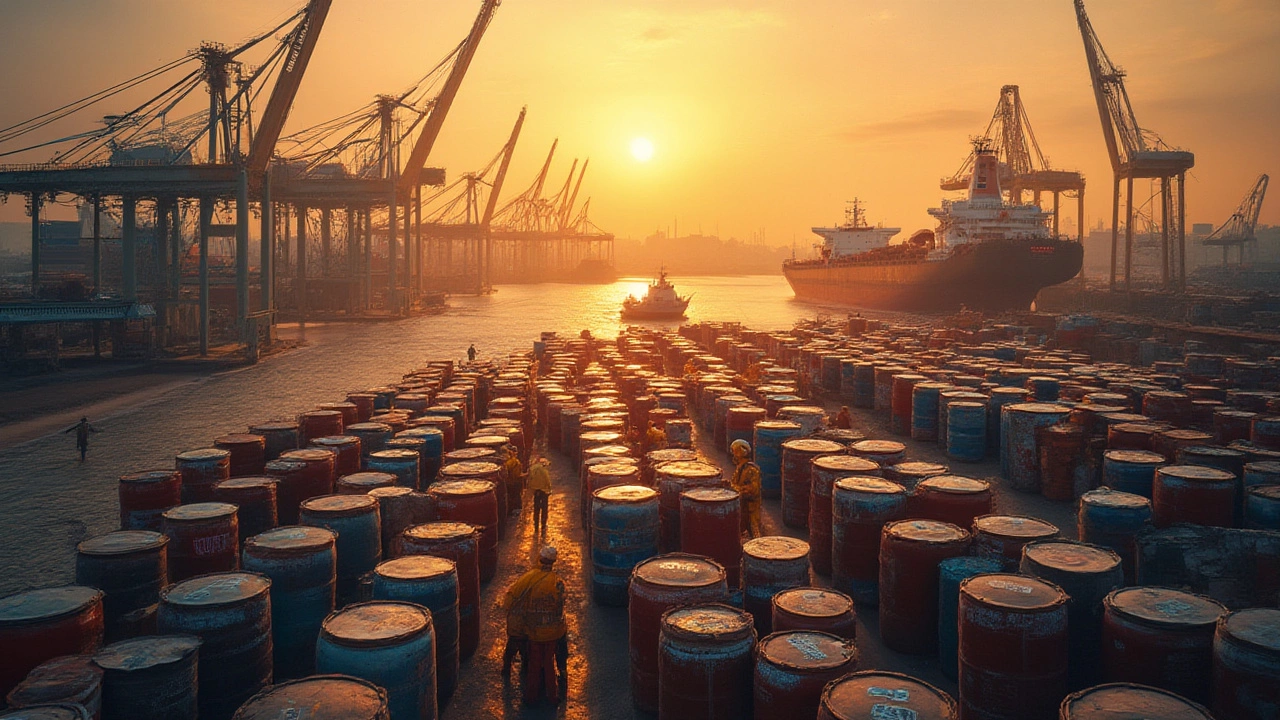
Which Chemical Is Not Manufactured in India? Uncovering India's Chemical Supply Gaps
Which chemicals aren't manufactured in India? Explore the supply gaps, why they exist, and what India imports, with plenty of specifics, stats, and real facts.
When talking about chemical imports India, the flow of chemicals from abroad into India's factories and labs, governed by customs, tariffs, and safety rules. Also known as chemical imports in India, it shapes everything from drug production to textile dyes. The chemical imports India market reacts to global price swings, regulatory changes, and demand from fast‑growing sectors. Below you’ll see why staying on top of these moves matters for anyone dealing with raw materials or finished products.
One of the biggest forces behind the imports is chemical manufacturing, the domestic process of turning imported feedstock into usable chemicals, plastics, and pharma ingredients. Indian manufacturers rely on imported basic chemicals like ethylene, methanol, and specialty solvents to keep production lines humming. When supply chains tighten, manufacturers often scramble for alternate sources, which pushes up costs and can delay product launches.
Closely tied to this is the Indian pharmaceutical sector, the network of drug makers, contract research organizations, and exporters that depend on high‑purity chemicals for APIs and intermediates. The pharma industry accounts for a sizable chunk of chemical imports, especially active pharmaceutical ingredients (APIs) that are not yet produced locally. Any shift in import policy directly hits drug pricing and availability, making the sector a bellwether for policy impact.
Import tariffs and customs duties act as the financial gatekeepers for these flows. Recent revisions to the Customs Tariff Act lowered duties on certain specialty chemicals to spur domestic production, while other categories still face 10‑15 % rates. These rates influence whether a company chooses to import or invest in on‑shore synthesis, affecting long‑term capital planning.
Beyond duties, the regulatory landscape—led by bodies such as the Central Drugs Standard Control Organization (CDSCO) and the Ministry of Environment—sets quality and safety benchmarks. Compliance means detailed documentation, HS codes, and sometimes mandatory testing before chemicals can enter Indian ports. Failure to meet these standards can result in seizure, fines, or supply interruptions.
Global suppliers from the US, Europe, and the Middle East dominate the high‑value segment, while bulk chemicals often come from China and Saudi Arabia. Logistics routes—via major ports like Mumbai and Chennai—must handle both bulk shipments and temperature‑sensitive cargos, adding another layer of complexity to the supply chain.
Domestic industries feel the ripple effects in real time. For example, a rise in imported PET resin costs pushes up plastic bottle prices, which then affect beverage manufacturers and consumers. Similarly, higher costs for specialty solvents can slow down R&D in cosmetics and agro‑chemicals, delaying product rollouts.
Looking ahead, the Indian government’s push for self‑reliance (Atmanirbhar Bharat) includes incentives for setting up local chemical plants, aiming to reduce import dependence. However, the need for advanced technology and skilled labor means imports will likely stay relevant, especially for niche chemicals that require sophisticated production methods.
All these pieces—tariffs, regulations, global suppliers, and domestic demand—interact to form the dynamic picture of chemical imports India. In the list that follows, you’ll find articles that break down market data, explore policy changes, and offer practical tips for navigating the import process, whether you’re a startup founder, a supply‑chain manager, or an investor eyeing the sector.

Which chemicals aren't manufactured in India? Explore the supply gaps, why they exist, and what India imports, with plenty of specifics, stats, and real facts.